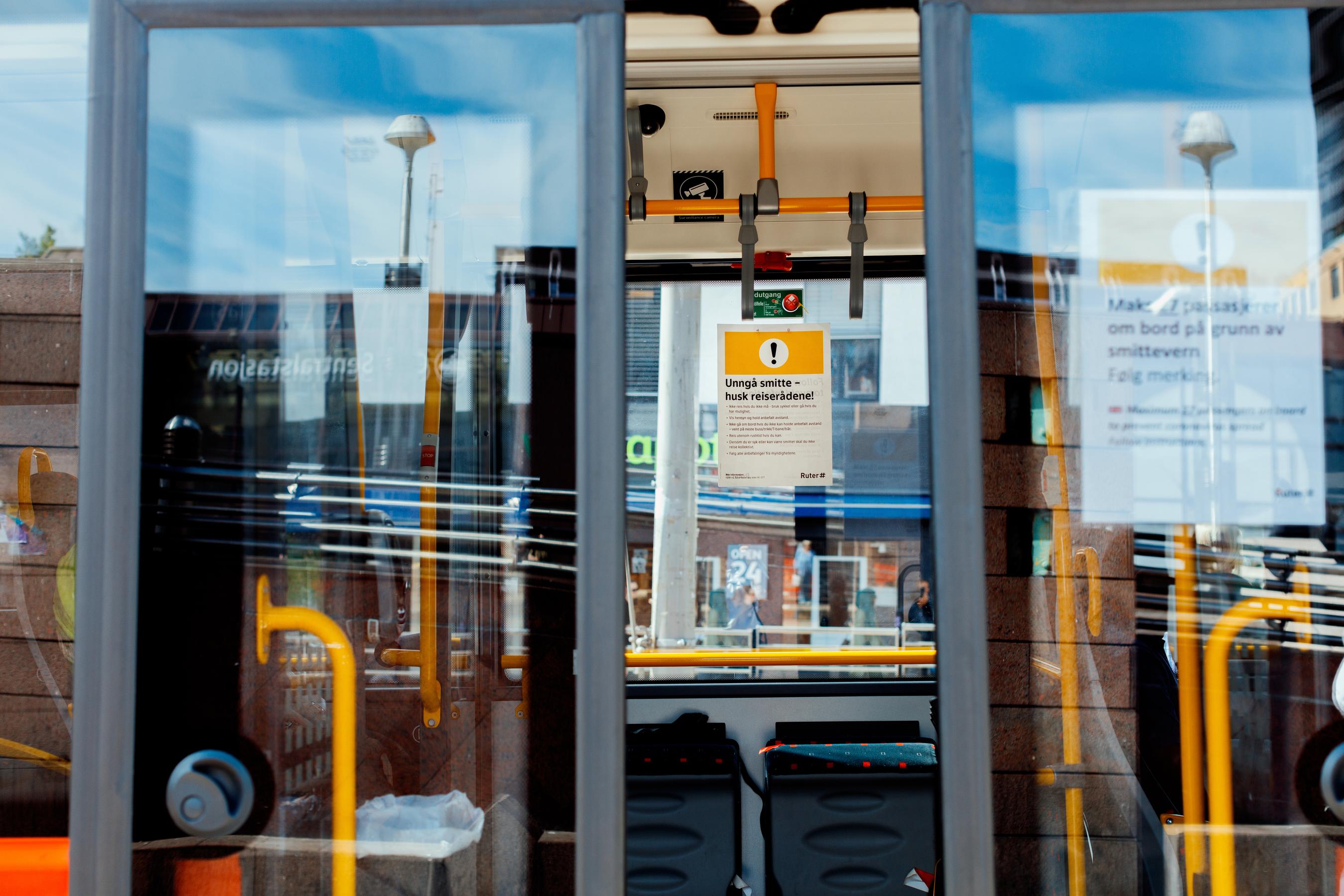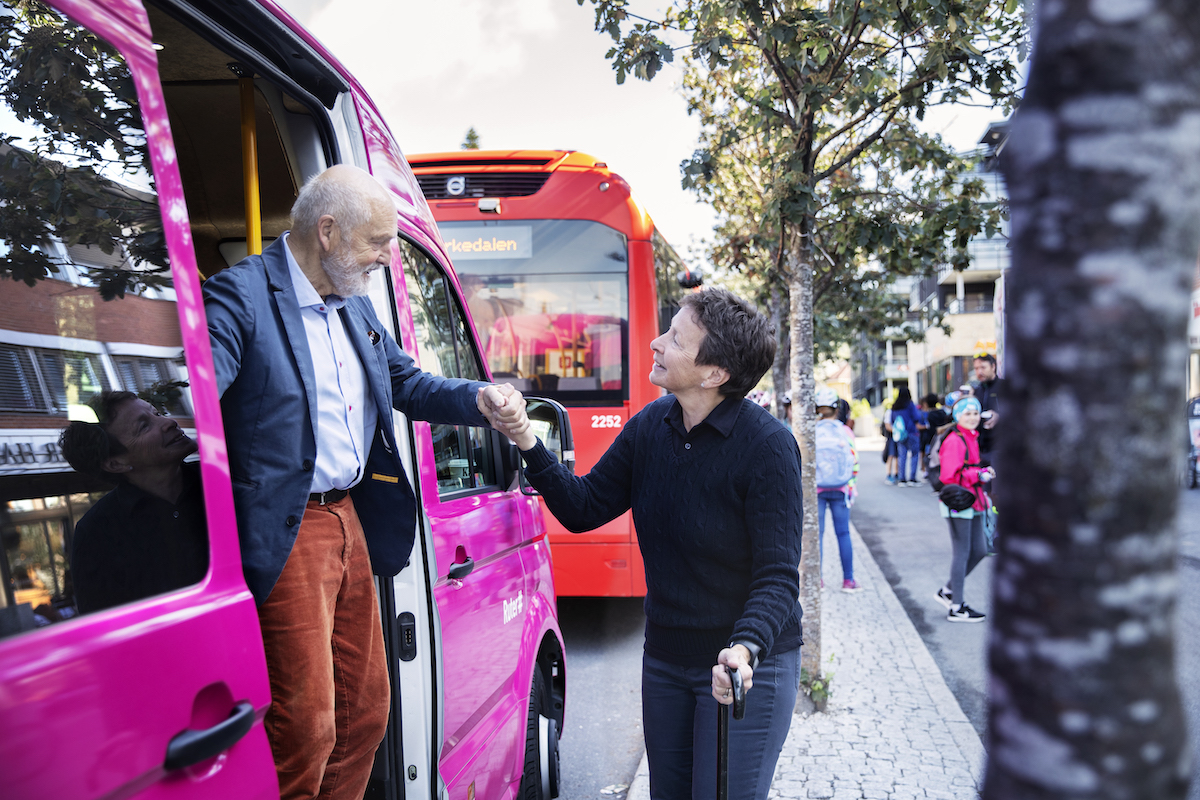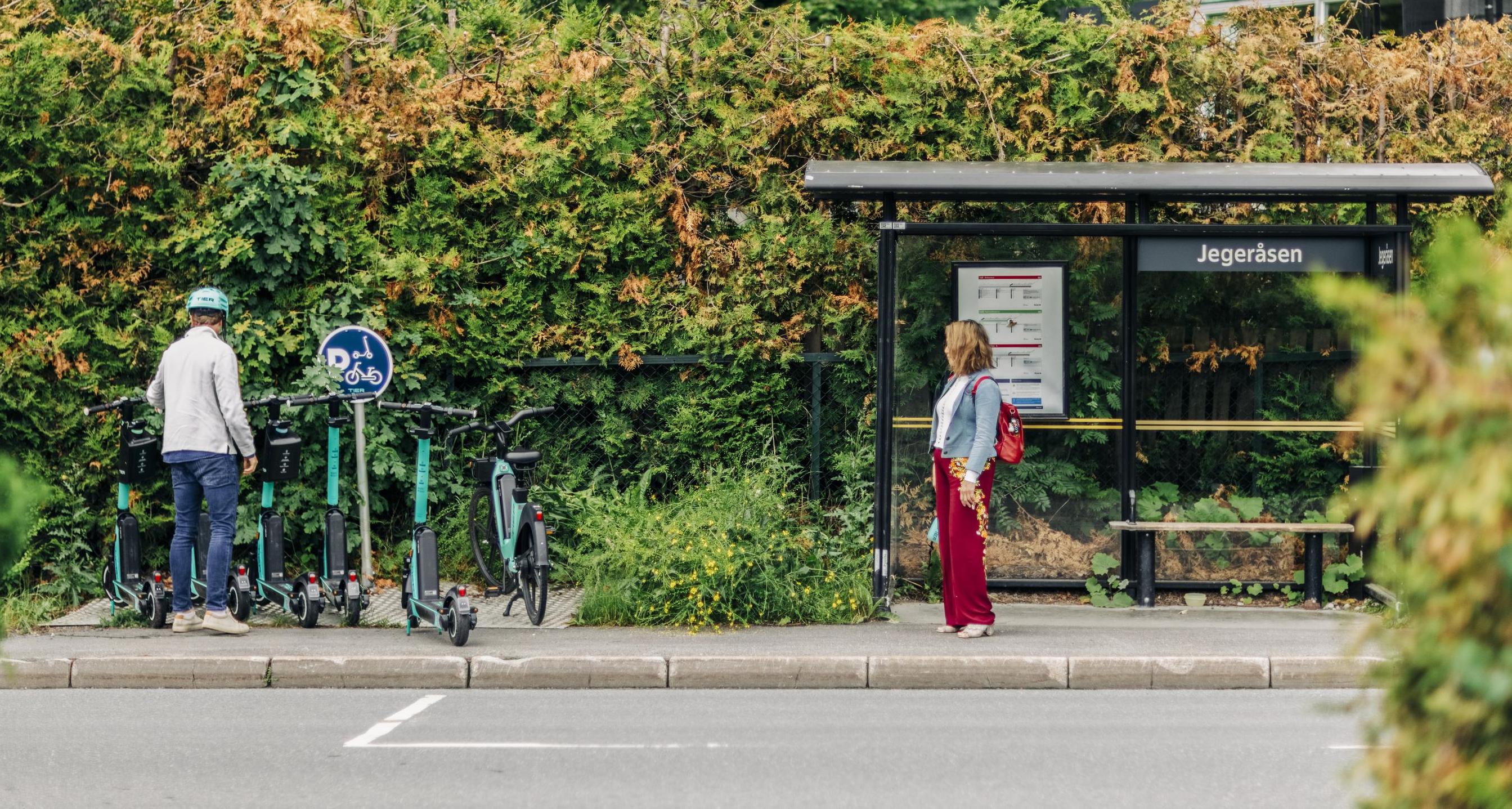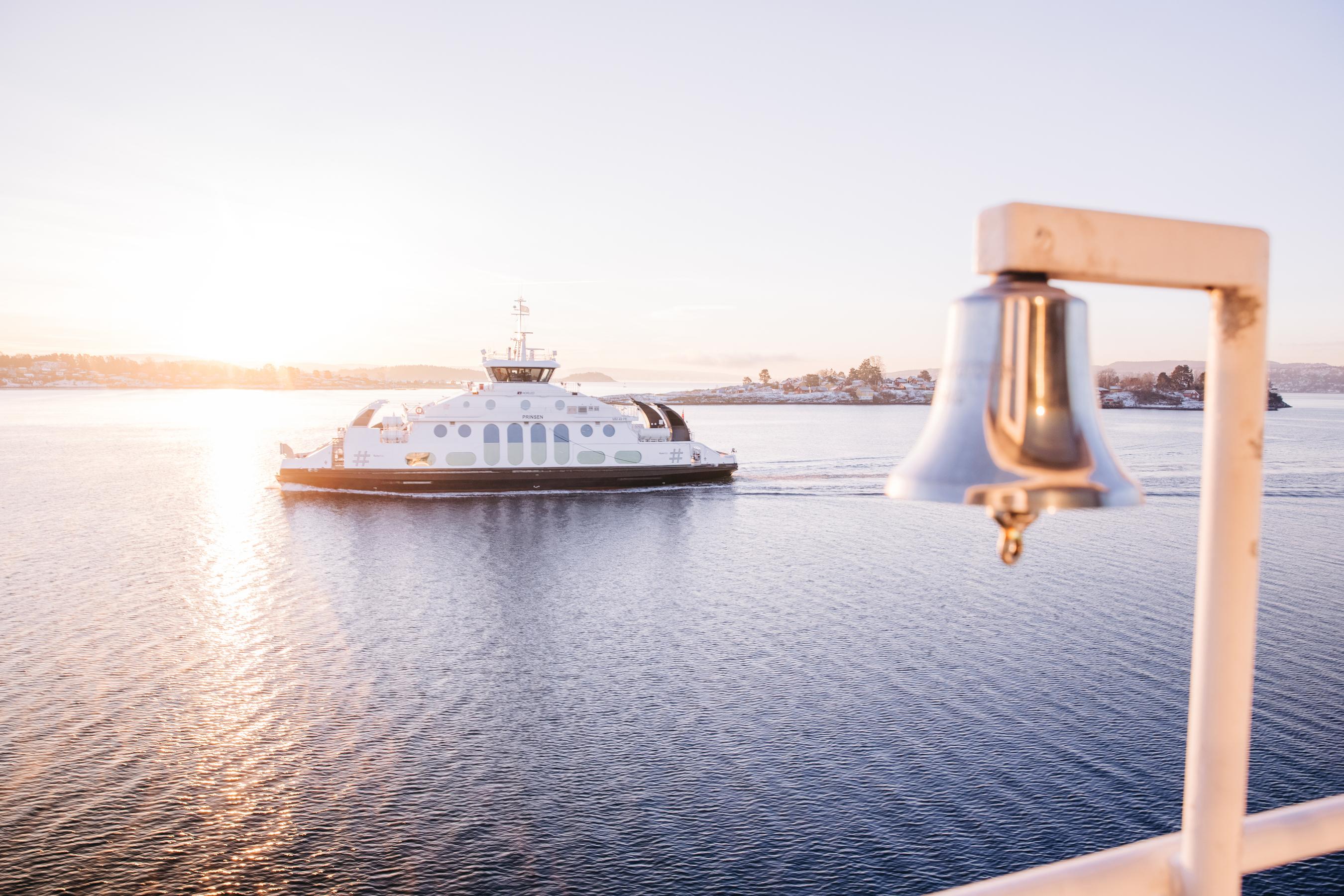
Pilot projects in Ski
The transport sector is developing rapidly, and emerging technology gives us the opportunity to develop more flexible and customised travel services. To find out how to use new forms of mobility to simplify travel, we test them in real traffic scenarios in collaboration with our customers and partners.
Ruter’s pilot projects could be seen in many municipalities in 2021. This year, Nordre Follo, in particular, became a centre for testing new mobility concepts. As a city in rapid growth a short train journey from the centre of Oslo, Ski is an excellent place for testing new forms of mobility adapted to a range of customer requirements. The pilot projects we launched in Ski in 2021 provide a picture of the types of services that may become part of Ruter’s travel offering going forward.
Launch of mobility point in Ski
On 18 June 2021, we launched a mobility point at Ski Station, in collaboration with Entur and Bane NOR Eiendom. By making a number of different transport and travel options available in one place, we explore different user needs and the way in which new forms of mobility can best be designed to complement existing public transport. The aim is to learn how combined mobility, i.e. different forms of travel options in combination, can be used to make environmentally friendly transport choices easier.
Mobility point
A mobility point is a place where various means of transport are available for use. A combined selection of different transport options covers a range of uses and enables smooth transition between means of transport for the traveller. By offering a variety of shared vehicles that have been adapted to different needs, our aim is to make managing without a car on a daily basis much easier.
In addition to stationary facilities on site, such as bicycle hotels, parking spaces and kiss & ride, the following modes of travel are now available at Ski Station:
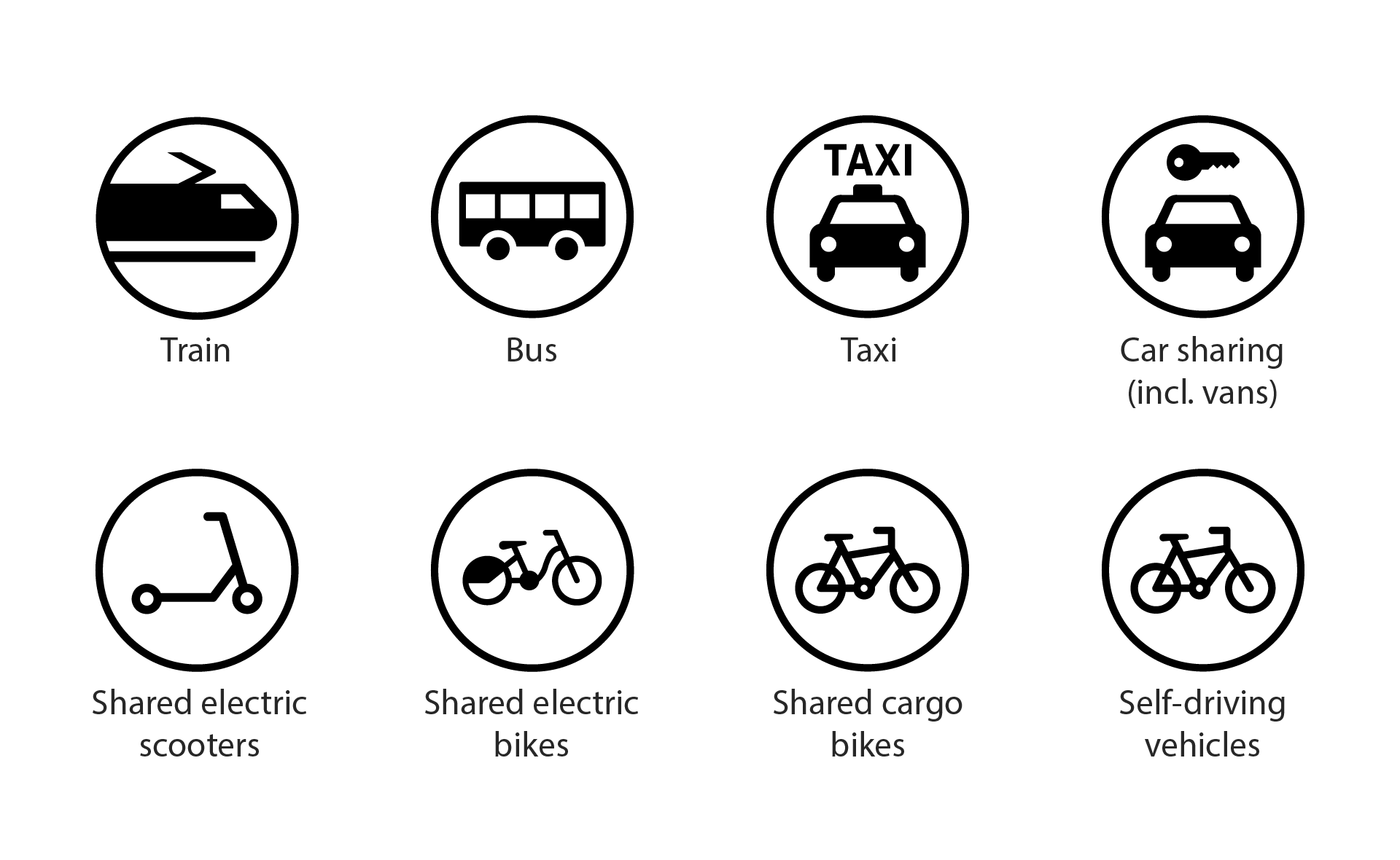
Self-driving vehicles in new surroundings
Ruter believes that self-driving vehicles will play a key role in travel in the future. In the short term, we envisage being able to use them to expand our existing public transport offering with new types of service. In the longer term, self-driving vehicles represent the start of a comprehensive shift in the transport sector where the transport network will become increasingly automated. This development offers great potential for seamless, individualised and sustainable passenger transport.
After completing our initial trials in Oslo, we moved to new locations in 2021. In April, route 529 was launched using self-driving vehicles between Ski Station and the nearby residential area of Hebekk. Exciting new partners gave the project’s technological dimension a boost. The new route uses vehicles from Toyota, equipped with self-driving Sensible 4 software. This upgrade allowed us to make important progress after our initial tests in Oslo, mainly in the form of higher speeds on the road and enhanced operational stability in rain and snow.
Ruter’s testing of self-driving vehicles is a research and development project. Its purpose is for us to gain experience with available self-driving technology and help to develop it further, while we build up applicable professional knowledge within Ruter and our partner organisations. We believe that it is important that Ruter is prepared for the emergence of self-driving technology so that we can take an active role in ensuring that it is introduced on our roads in a way that benefits both people and society.

With the project’s operational aspects under improvement, in 2021 we also began to concentrate increasingly on giving passengers the best possible travel experience in vehicles that will eventually be completely unmanned. In the summer of 2021, we worked with people with disabilities to explore the customer interface of unmanned vehicles and how to give it a universal design. In the autumn and winter, we conducted user tests on route 529 and interviewed the service’s regular customers. Simple concepts for interaction between passenger and vehicle were tested on end users, something we will continue working on into 2022.
We have continued to gain valuable knowledge for the future from the operation of self-driving vehicles in Ski. We now have a much clearer picture of the challenges we need to work on before self-driving services can become a regular part of the public transport system. With an ever-broader knowledge base, we look forward to continuing our exploration of self-driving services in the years ahead.
Key partners
In order to roll out pilot projects involving new mobility technology, Ruter depends on close collaboration with partner organisations and operators. The mobility point in Ski is the result of an effective partnership between Ruter, Bane NOR Eiendom, Entur and Nordre Follo Municipality. Testing self-driving vehicles is performed as a research and development project with operating company Holo. The project is one of many initiatives under the umbrella of ‘Smarter Transport in the Oslo Region’– a three-party collaboration where Ruter, the Norwegian Public Roads Administration and the Urban Environment Agency in Oslo Municipality together explore the ways in which emerging technology can be used to improve the transport network in the Oslo area.
